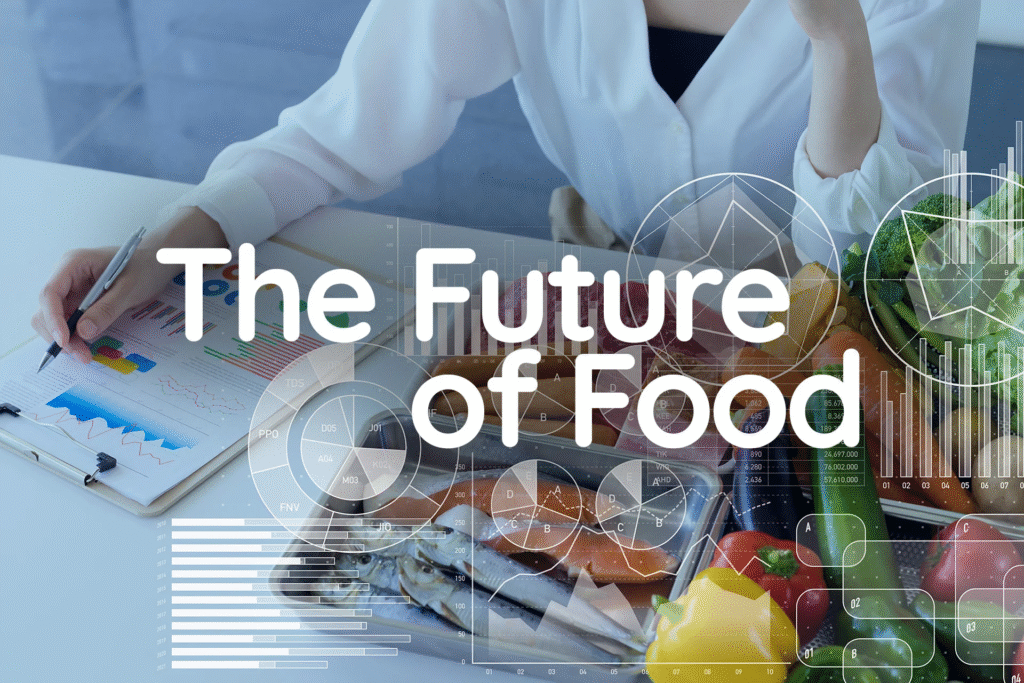Food is more than just sustenance—it’s culture, identity, and innovation all rolled into one. In recent years, we’ve witnessed a seismic shift in how we consume, source, and think about food. From the rise of plant-based eating to the infusion of AI in kitchens, food trends are not only transforming menus but also influencing agriculture, packaging, and global health.
In this article, we dive deep into the top food trends shaping the way we eat in 2025 and beyond, uncovering the cultural, technological, and environmental drivers behind these shifts.
The Evolution of Food Trends

What Defines a Food Trend?
A food trend reflects a broader change in consumer behavior, preferences, and values. Unlike fads, which are short-lived, food trends tend to grow steadily and have lasting influence on the industry.
Key Drivers of Modern Food Trends
- Health consciousness
- Environmental sustainability
- Technological innovation
- Cultural globalization
- Consumer demand for transparency
Top Food Trends Reshaping the Industry
1. Plant-Based Everything
Once niche, plant-based food has become mainstream. The rise of veganism, vegetarianism, and flexitarian diets has led to incredible innovation in meat alternatives, dairy-free options, and plant-powered nutrition.
Popular Plant-Based Innovations
- Beyond Meat and Impossible Foods for meat substitutes
- Oat, almond, and soy milk replacing dairy
- Jackfruit, mushrooms, and lentils in savory dishes
Why It Matters
- Lower environmental impact
- Ethical treatment of animals
- Health benefits: reduced cholesterol, lower risk of chronic diseases
2. Functional Foods and Nutraceuticals
Modern consumers are looking for more than taste—they want food that supports health goals. Functional foods include ingredients with added health benefits like improved digestion, immunity, or mental clarity.
Trending Functional Ingredients
- Probiotics & prebiotics (gut health)
- Adaptogens like ashwagandha and ginseng (stress relief)
- Collagen peptides (skin and joint support)
- Superfoods like chia seeds, moringa, and turmeric
3. Sustainable and Regenerative Agriculture
Sustainability isn’t just about reusable straws—it’s about how we grow our food. Regenerative agriculture focuses on restoring soil health, increasing biodiversity, and capturing carbon.
What’s Changing?
- Shift from monoculture to polyculture farming
- Use of cover crops and reduced tilling
- Organic, non-GMO produce gaining traction
Consumer Impact
- Higher demand for local, organic products
- Farm-to-table and direct-to-consumer models booming
4. Lab-Grown and Cultivated Meat
Lab-grown meat, also known as cultivated or cell-based meat, is redefining protein. This meat is grown from animal cells in a lab, eliminating the need to raise and slaughter livestock.
Pros of Cultivated Meat
- Significantly lower environmental footprint
- Ethical meat consumption
- High protein, no antibiotics
Challenges
- Regulatory approval
- Consumer perception
- Price barriers
5. Food Tech: Smart Kitchens and AI Recipes

Technology is revolutionizing the kitchen. From AI-driven recipe suggestions to smart appliances that monitor nutrition and cooking techniques, the fusion of food and tech is changing the way we prepare meals.
Trending Food Tech Examples
- Smart ovens that adjust temperature and timing
- AI meal planners based on dietary needs and goals
- Robotic chefs in commercial kitchens
6. Global Fusion and Cultural Cuisine Revival
Thanks to globalization, there’s never been a better time to taste the world. Food trends are embracing cross-cultural fusion and reviving traditional recipes.
Examples of Global Fusion
- Korean-Mexican tacos
- Japanese-Peruvian Nikkei cuisine
- Indian-inspired vegan dishes
Cultural Resurgence
- Indigenous food traditions being rediscovered
- Ancient grains like teff, sorghum, and millet making a comeback
7. Zero-Waste and Upcycled Foods
Food waste is a massive issue, and the industry is responding with creative solutions. Upcycling involves repurposing by-products or imperfect produce into edible products.
Popular Upcycled Products
- Crackers made from leftover grain from beer brewing
- Ice cream using surplus fruit
- Chips made from vegetable pulp
Benefits
- Reduces landfill waste
- Supports circular economy
- Often more affordable and sustainable
8. Alternative Proteins Beyond Meat
Beyond plant-based meat, there are several innovative protein sources making their way onto our plates.
Types of Alternative Proteins
- Insect-based proteins (crickets, mealworms)
- Mycoproteins (fungi-based like Quorn)
- Seaweed and algae proteins
Why It’s Trending
- High efficiency in production
- Rich in nutrients
- Lower environmental impact
9. Immersive Dining and Experiential Food
Food is becoming a sensory adventure. Restaurants are crafting multi-sensory experiences with lighting, sound, VR, and storytelling.
Examples of Experiential Trends
- Dining in the dark restaurants
- Augmented reality menus
- Edible art and molecular gastronomy
10. Hyper-Personalized Nutrition
Thanks to wearable health tech and DNA testing, personalized diets are on the rise. People are choosing food that’s uniquely suited to their biology and goals.
Tools Fueling the Trend
- Gut microbiome analysis kits
- AI-based nutrition apps
- Personalized meal delivery services
Outcomes
- Custom macro-nutrient plans
- DNA-driven vitamin regimens
- Improved health outcomes
The Influence of Food Trends on the Global Market
Economic Shifts
The global food market is now shaped by trends more than ever:
- Plant-based food market projected to hit $95 billion by 2029
- Functional food industry rapidly expanding
- Traditional fast food adapting with new menus (vegan, gluten-free, etc.)
Restaurant & Retail Impact
- Grocery stores now carry lab-grown, organic, and upcycled products
- Menus adapt quickly to demand for fusion and plant-based meals
- Apps and meal kits capitalize on convenience + health
The Future of Food: What’s Next?

Looking ahead, we can expect continued disruption driven by innovation and ethics.
Anticipated Trends
- 3D-printed meals
- Edible packaging
- Blockchain for food transparency
- Climate-adaptive crops
Also Read : Funnel Cake: A Classic American Fairground Delight
Conclusion
The way we eat is undergoing a fundamental transformation. Driven by health, technology, culture, and environmental urgency, today’s food trends are paving the way toward a more conscious, innovative, and delicious future. From plant-based burgers to personalized DNA diets, the evolution is not only reshaping how food is produced and consumed—but also what it means to us.
As consumers become more informed and mindful, the food industry must continue to innovate responsibly, blending sustainability with satisfaction. Whether you’re a home cook, foodie, or entrepreneur, now is the time to embrace these trends and be part of a global food revolution.
Frequently Asked Questions (FAQs)
What are the biggest food trends of 2025?
The top trends include plant-based eating, sustainable agriculture, lab-grown meat, functional foods, and tech-integrated kitchens.
Are food trends just marketing gimmicks?
While some food fads fade quickly, true trends are based on long-term changes in consumer values and behaviors, especially regarding health and the environment.
How can I incorporate food trends into my diet?
Start small—try plant-based meals once a week, explore global cuisines, or look for upcycled products and sustainable brands at your grocery store.
What is the most impactful food trend for the environment?
Plant-based diets and regenerative farming offer the greatest positive environmental impact due to lower emissions, reduced water use, and soil regeneration.
Will lab-grown meat replace traditional meat?
It’s likely to become a common option, especially in urban areas. However, traditional meat will still exist, with cultivated meat offering a more ethical and sustainable choice.

